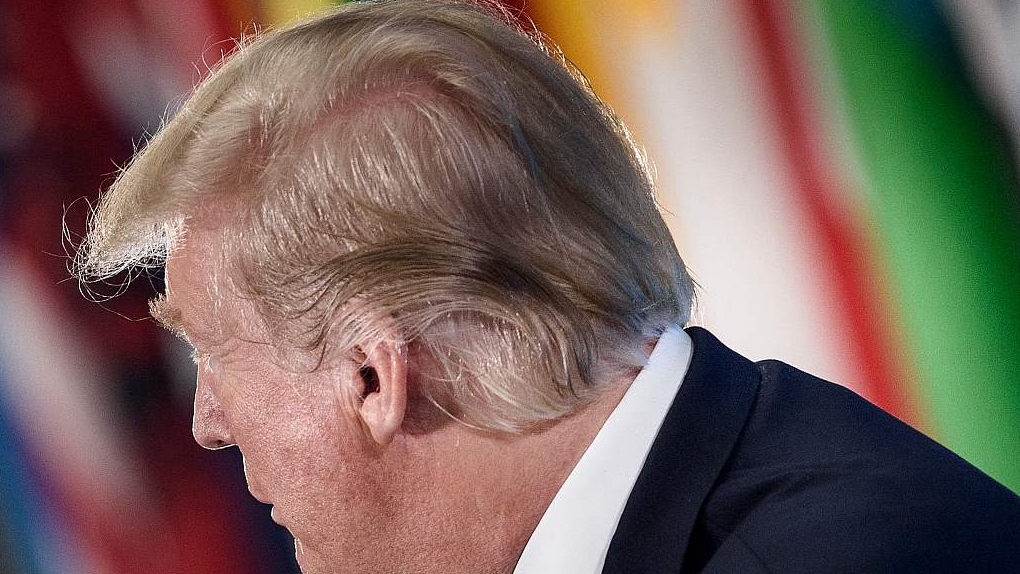Conflicts, turmoil and a lot of new jobs. The story so far of the Trump White House is as drama-filled as any episode of the president's hit reality show, "The Apprentice."
The next two-year installment will set up a mighty cliffhanger: Will Trump be a one- or two-term president?
2020 on the mind
Trump's next two years in office will play out against the politics of the 2020 presidential election, and likely be colored by investigations and the gridlock of divided government.
To retain the White House, Trump needs to appeal to moderate Republicans and independents while keeping his base of support.
An attempt to reach out – and attract the suburbanites who have moved away from the Republicans – was evident in his State of the Union on Tuesday evening, with a call for federal paid family leave, lower healthcare costs and infrastructure investment.
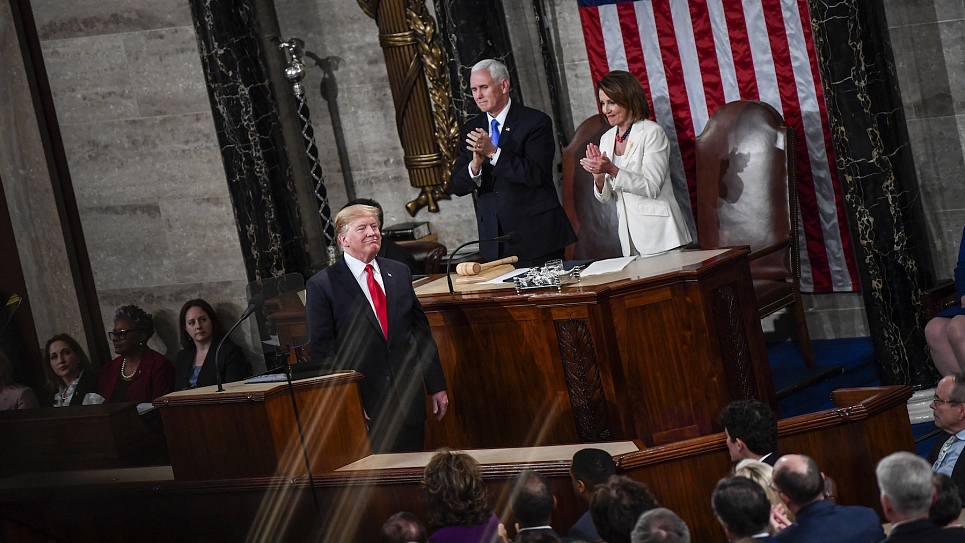
U.S. President Donald Trump, in front of Vice President Mike Pence and House Speaker Nancy Pelosi, pauses as he delivers his State of the Union address at the U.S. Capitol in Washington, DC, February 5, 2019. /VCG Photo
U.S. President Donald Trump, in front of Vice President Mike Pence and House Speaker Nancy Pelosi, pauses as he delivers his State of the Union address at the U.S. Capitol in Washington, DC, February 5, 2019. /VCG Photo
Bipartisan policies are easier to put forward than achieve, however, and with electoral politics at play Republicans and Democrats would need to be confident of clear wins to make progress. Democrats, in control of the House of Representatives for the next two years, are unlikely to give Trump an inch.
The battle is therefore likely to be one of messaging as much as substantive progress.
The president used different language in the State of the Union to target different voting blocs. The tactic is hardly new, but in a national campaign striking a balance that gets enough people to the ballot box is tough – even with the record-breaking 129 million U.S. dollars Trump has already raised for his re-election effort.
Those efforts are under new strains in the era of divided government and Nancy Pelosi's stewardship of House Democrats – particularly on Trump's pet project, a wall on the U.S.-Mexico border.
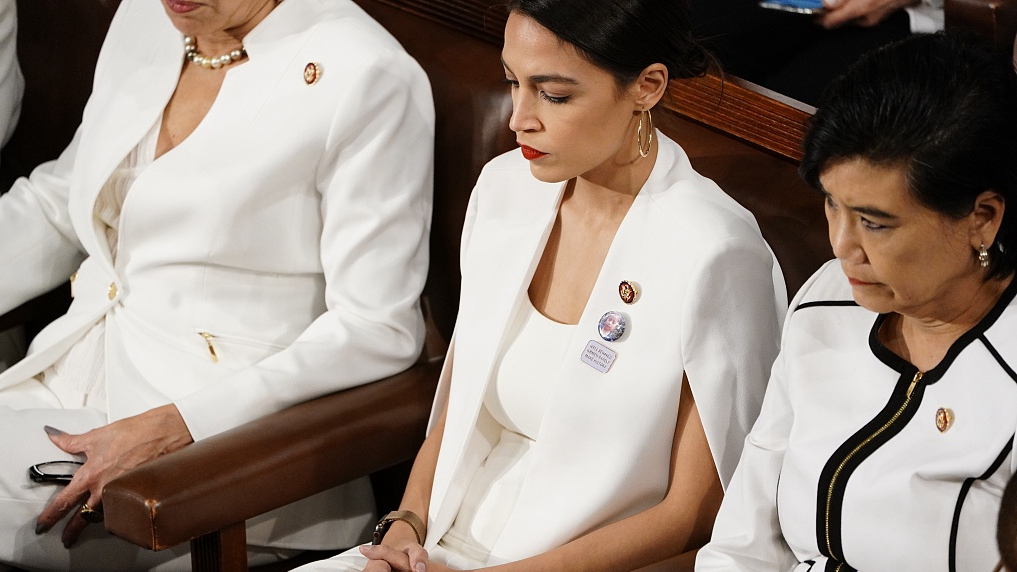
Rep. Alexandra Ocasio-Cortes does not react to U.S. President Donald Trump during the State of the Union address at the U.S. Capitol in Washington, DC, February 5, 2019. /VCG Photo
Rep. Alexandra Ocasio-Cortes does not react to U.S. President Donald Trump during the State of the Union address at the U.S. Capitol in Washington, DC, February 5, 2019. /VCG Photo
In the State of the Union, Trump spoke of a wall, but also a barrier employed in areas recommended by border agents. The first option is a no-go for Democrats, the second could be acceptable with a good enough offer on immigration reform in return.
But the issue reflects Trump's broader bind. Any softening of tone on illegal immigration carries electoral risks: It would increase the chances of funding for a wall-like structure, but could also frustrate core voters who could stay at home on election day. When temporary protections for Dreamers were floated in January, it infuriated right-wing commentators.
Trump chose to campaign on immigration in the 2018 midterms, rather than the good news story of a growing economy and expanded workforce, and the Republicans lost comprehensively.
Forecasts suggest he may not have that option in 2020, with an array of economic headwinds swirling: From slowing global growth and higher U.S. interest rates to the sustained impact of tax cuts and the harm caused by government shutdowns.
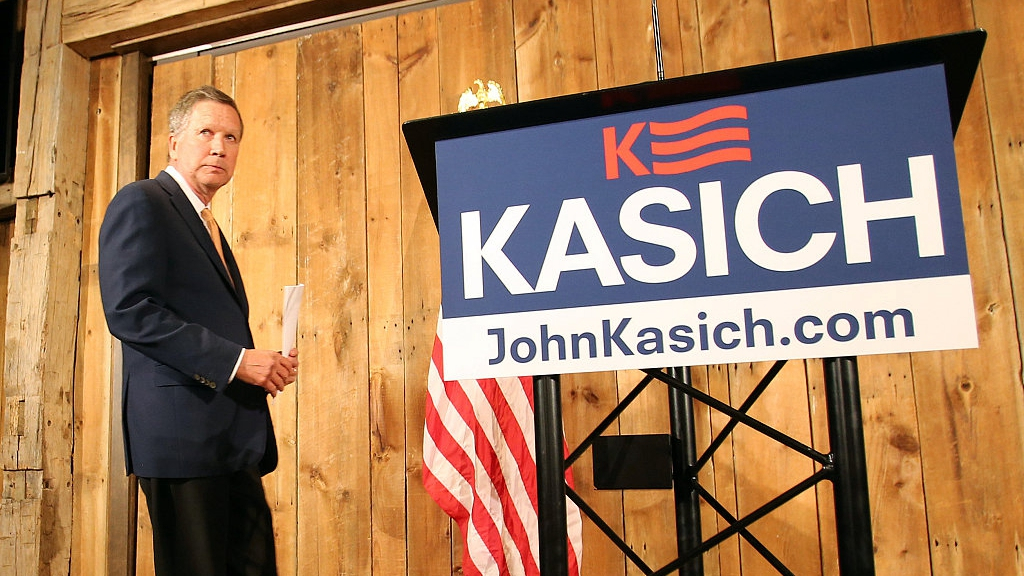
Then Ohio Governor John Kasich enters the room to speak about withdrawing as a U.S. Republican presidential candidate in Columbus, Ohio, May 4, 2016. /VCG Photo
Then Ohio Governor John Kasich enters the room to speak about withdrawing as a U.S. Republican presidential candidate in Columbus, Ohio, May 4, 2016. /VCG Photo
And while the sparring Democratic candidates may prove useful foils for the president over the next two years, he will come in for plenty of criticism – and may even face a primary challenger from a more traditional Republican figure, such as 2016 candidate John Kasich.
Investigations into the 2016 election – from Special Counsel Robert Mueller, the U.S. Attorney's Office for the Southern District of New York and congressional committees – are also likely to come to a conclusion, and any could spell serious trouble for the president and his team before election day on November 3, 2020.
Reaching out to Kim
The Korean Peninsula has, undoubtedly, stood tall on the president's agenda, as he eyes breakthroughs to support his unique approach to diplomacy.
Trump announced in Tuesday evening's speech that a second summit with Kim Jong Un will take place around February 27-28 in Vietnam. He touted the relationship with the leader of the Democratic People's Republic of Korea (DPRK) as a good one while admitting that “much work remains to be done.”

U.S. President Donald Trump and DPRK leader Kim Jong Un shake hands during the signing of a document after their summit on Sentosa island in Singapore, June 12, 2018. /VCG Photo
U.S. President Donald Trump and DPRK leader Kim Jong Un shake hands during the signing of a document after their summit on Sentosa island in Singapore, June 12, 2018. /VCG Photo
Aside from increasing the exposure of both leaders, the 2018 Singapore summit has actually resulted in little progress. Between the two leaders, the past months since the first meeting between a sitting U.S. president and a DPRK leader have been more courtesy and manner than an articulate timeline and roadmap for denuclearization – key to the perennial debate over what it takes to realize complete denuclearization of the Korean Peninsula.
The White House has mentioned the possibility of helping the DPRK's economy though it has not budged on lifting the sanctions that have dragged on the country's development. But this could raise more eyebrows among members of Congress.
Trump has taken credit for bringing back three U.S. prisoners from the DPRK and the bodies of over 50 American soldiers from the Korean War, a feat that eluded his predecessors. The story, however, is far from over. Whether he can make the budding bilateral relationship blossom could be a key credibility issue in the upcoming election.
Tangle with NATO
Trump has repeatedly criticized hitherto U.S. allies – "For years, the United States was being treated very unfairly by friends of ours – members of NATO" – and relations remain uneasy.
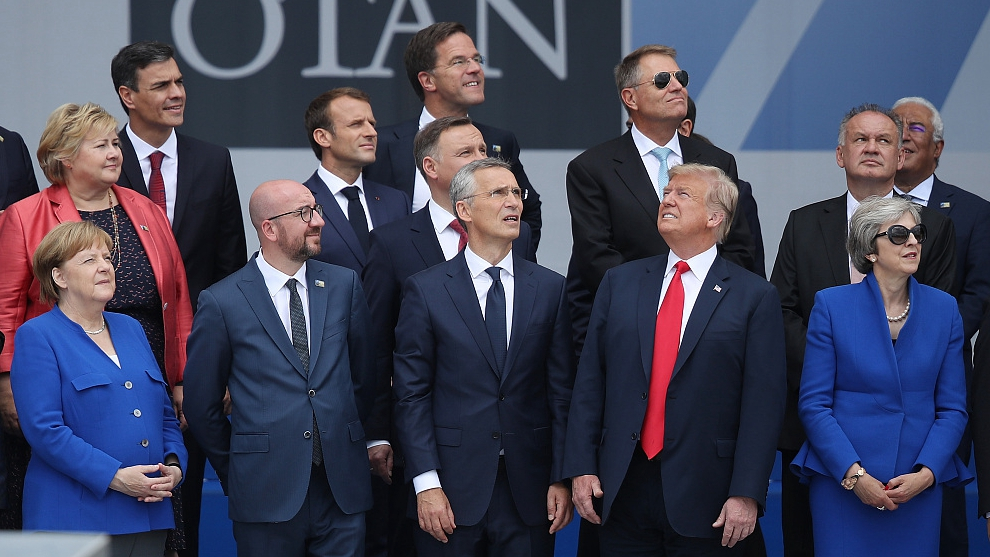
Leaders from NATO member and partner states attend the opening ceremony at the 2018 NATO Summit at NATO headquarters in Brussels, Belgium, July 11, 2018. /VCG Photo
Leaders from NATO member and partner states attend the opening ceremony at the 2018 NATO Summit at NATO headquarters in Brussels, Belgium, July 11, 2018. /VCG Photo
The president has pressured European members to spend more on the NATO alliance, an exhortation reiterated by the previous two administrations. His surprising withdrawal from the Intermediate-Range Nuclear Forces (INF) treaty has escalated the danger of an arms race, probably further estranging Washington's NATO allies.
But a resurgence of populism across Europe and Trump's nativism have converged into an anti-globalization movement. Whether they get along will depend on how they react to the international forces of globalism.
Oversea deployments
The drawdown of U.S. troops deployed overseas is a campaign pledge Trump aims to fulfill over the next two years. He has announced a withdrawal in Syria, though subsequently backtracked on a timescale, and said he intended to accelerate the drawdown in Afghanistan and push for peace.
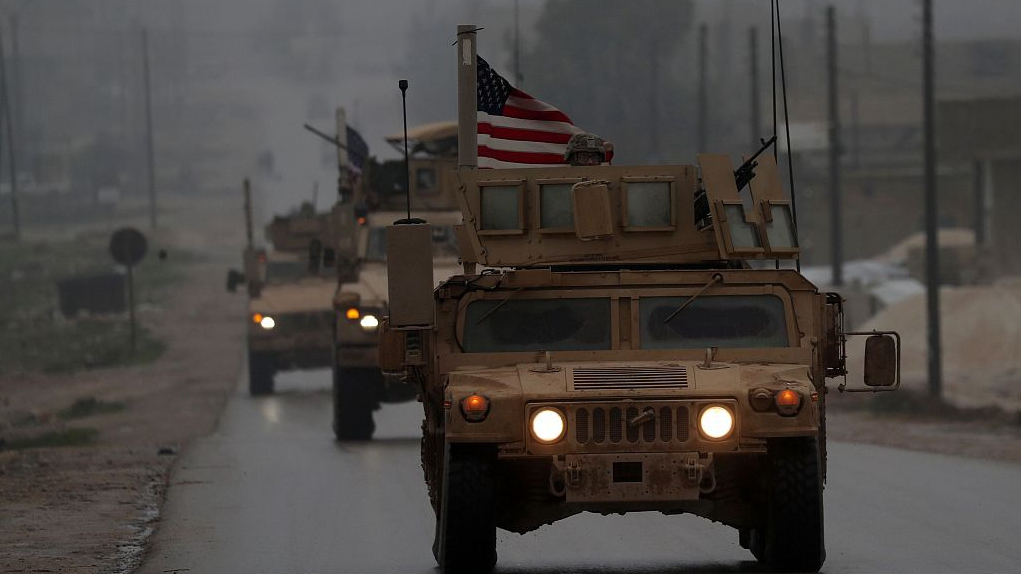
US military vehicles in Syria's northern city of Manbij, December 30, 2018. /VCG Photo
US military vehicles in Syria's northern city of Manbij, December 30, 2018. /VCG Photo
The desire to bring troops home without a clear plan for the aftermath remains unpopular with some Republicans in Congress and risks creating a divide with allies.
A key test will be what happens on the ground after a withdrawal, and whether Trump feels sufficient pressure to send troops back in the event of new threats – such as regrouping of ISIL – emerging.
A looming tech fight?
Trade is expected to be an enduring theme in part two of Trump's first term. He nagged about the ballooning American trade deficit long before he entered the White House.
The protracted trade battle has hurt economies and alliances, resulting in losses worth billions of U.S. dollars at home and abroad, with agriculture, hi-tech and automobile industries bearing the brunt.
The International Monetary Fund unveiled its forecast for U.S. economic growth at 2.5 percent in 2019. “What's more, the American economy will probably experience another recession given that global stocks trembled especially over semiconductor and auto giants for the past year,” China-U.S. observer Wang Yong told CGTN.
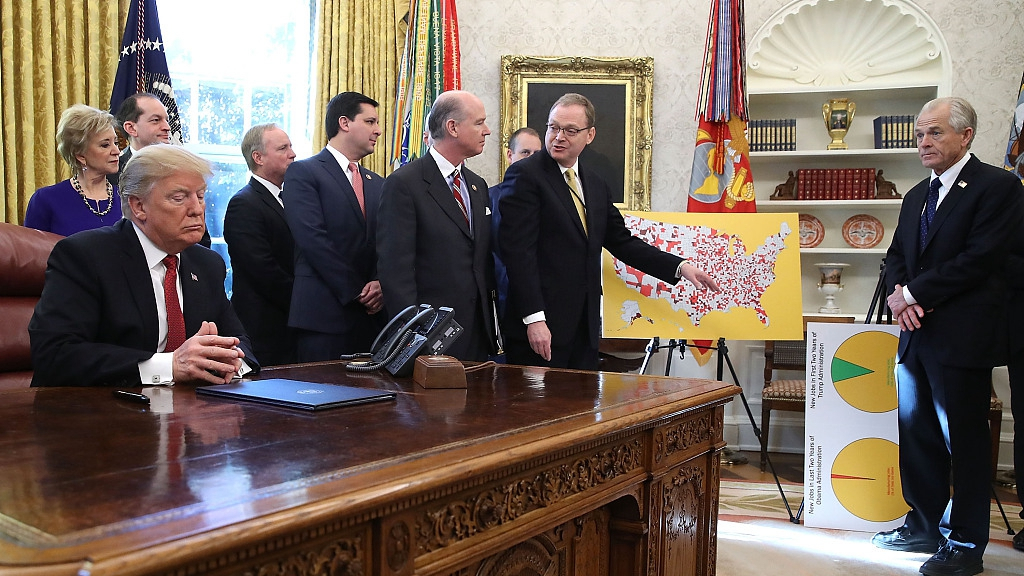
U.S. President Donald Trump listens as officials chat ahead of the signing of an executive order on manufacturing, in the Oval Office, Washington, DC, January 31, 2019. /VCG Photo
U.S. President Donald Trump listens as officials chat ahead of the signing of an executive order on manufacturing, in the Oval Office, Washington, DC, January 31, 2019. /VCG Photo
Trump needs both Kim and a robust economy to woo his voters, so there's a chance that tensions over the U.S.-China trade war will recede.
Nonetheless, any trade deal “must include real, structural change,” he said in the State of the Union. Among the so-called “structural changes,” technology transfer and intellectual property protection have become Trump's top concerns in the trade war. Chips, artificial intelligence, and quantum computing constitute the critical ingredients to the burgeoning new industrial revolution, and they are also areas where China is catching up to the U.S. at a speed the latter had never imagined.
Behind the scenes, where the balance of power has veered toward China hawks and trade skeptics, is a larger picture of Wall Street elites attempting to change China's industrial policies, noted Wang Yong, director of the Center for International Political Economy at Peking University.
Next, says Wang, Washington may work to promote World Trade Organization reform so that it will be able to draw up new rules to benefit the American economy.
But given Trump's caprice, simply tune in for more mini-dramas coming out of the White House.

